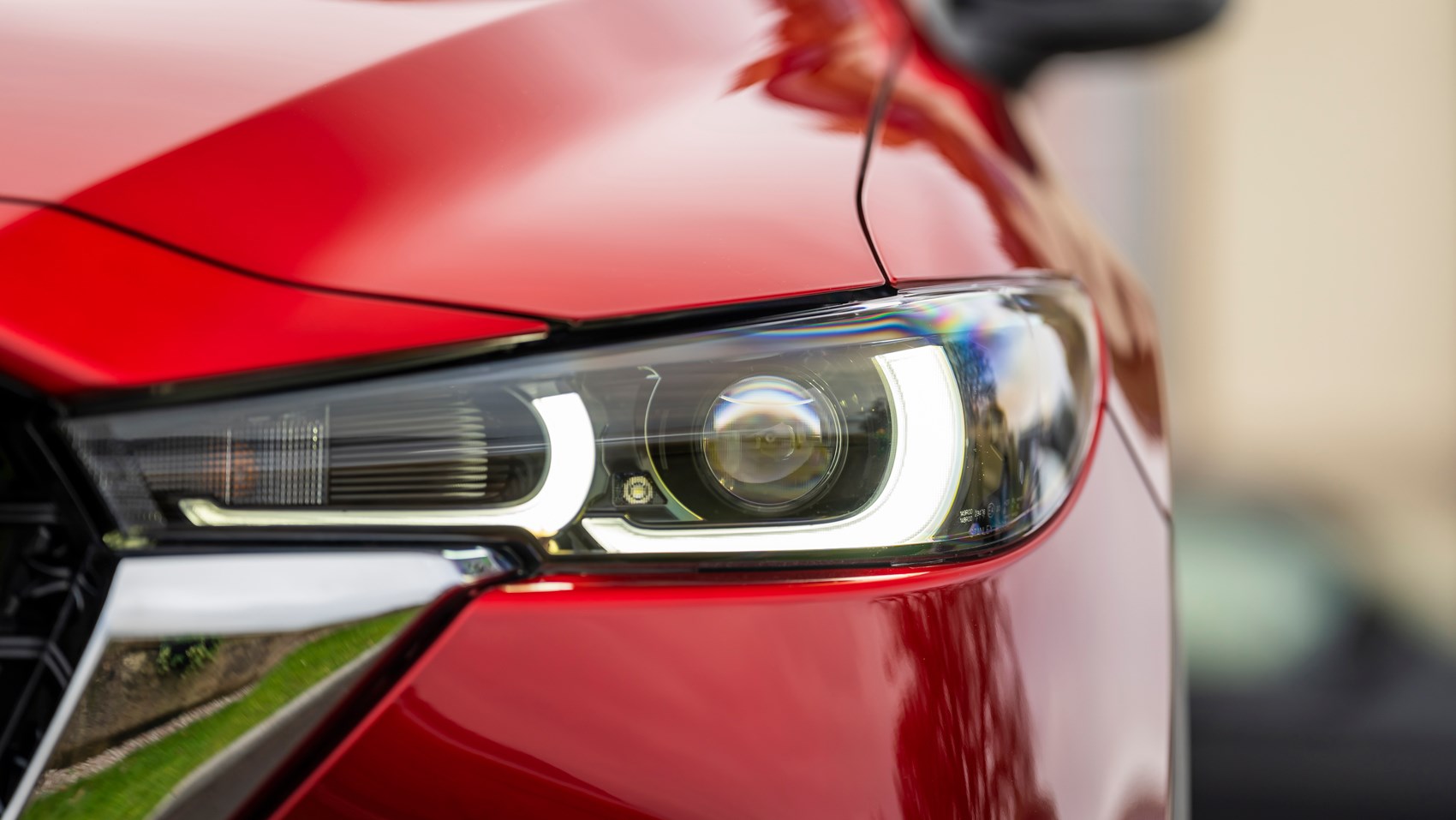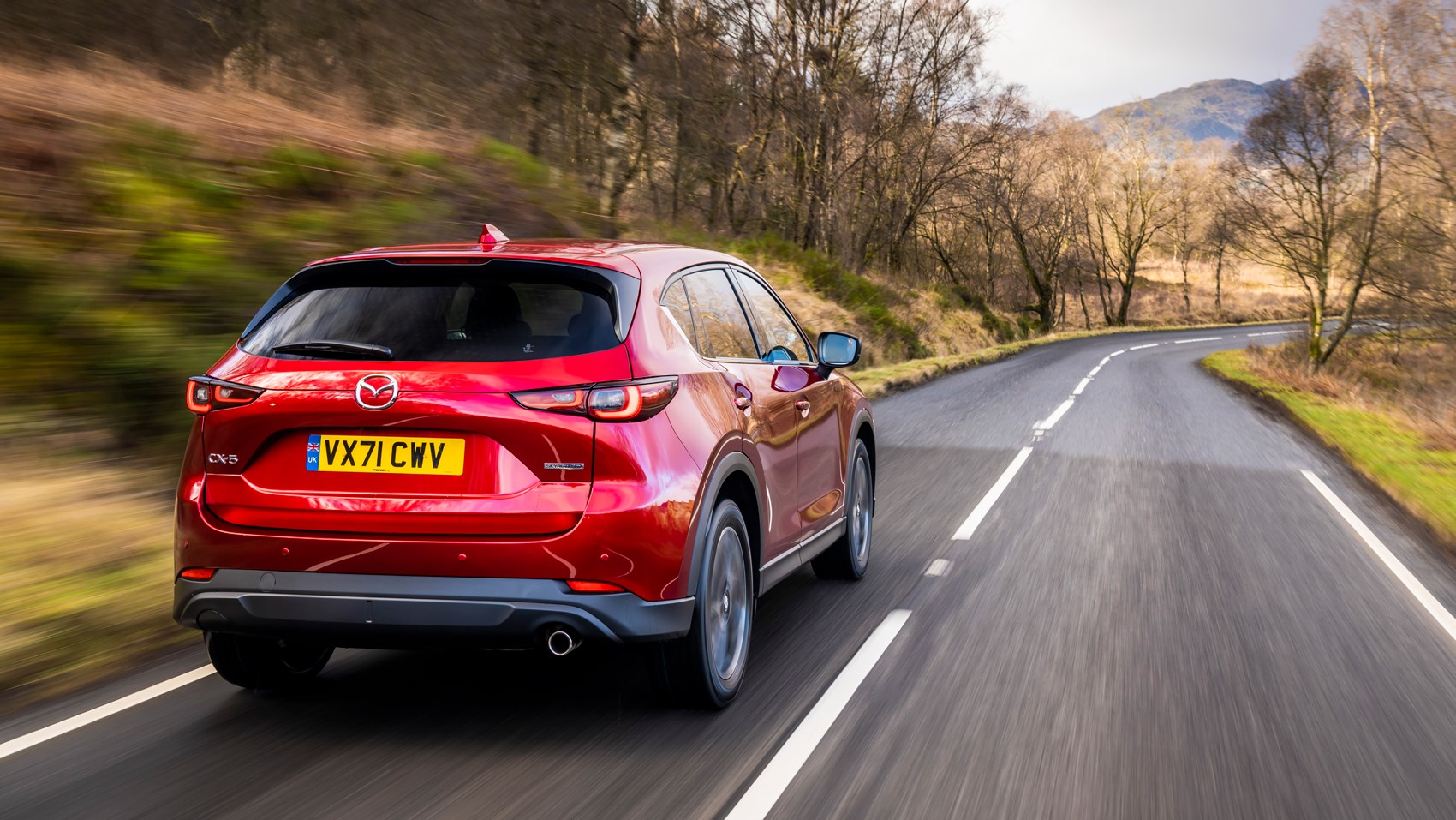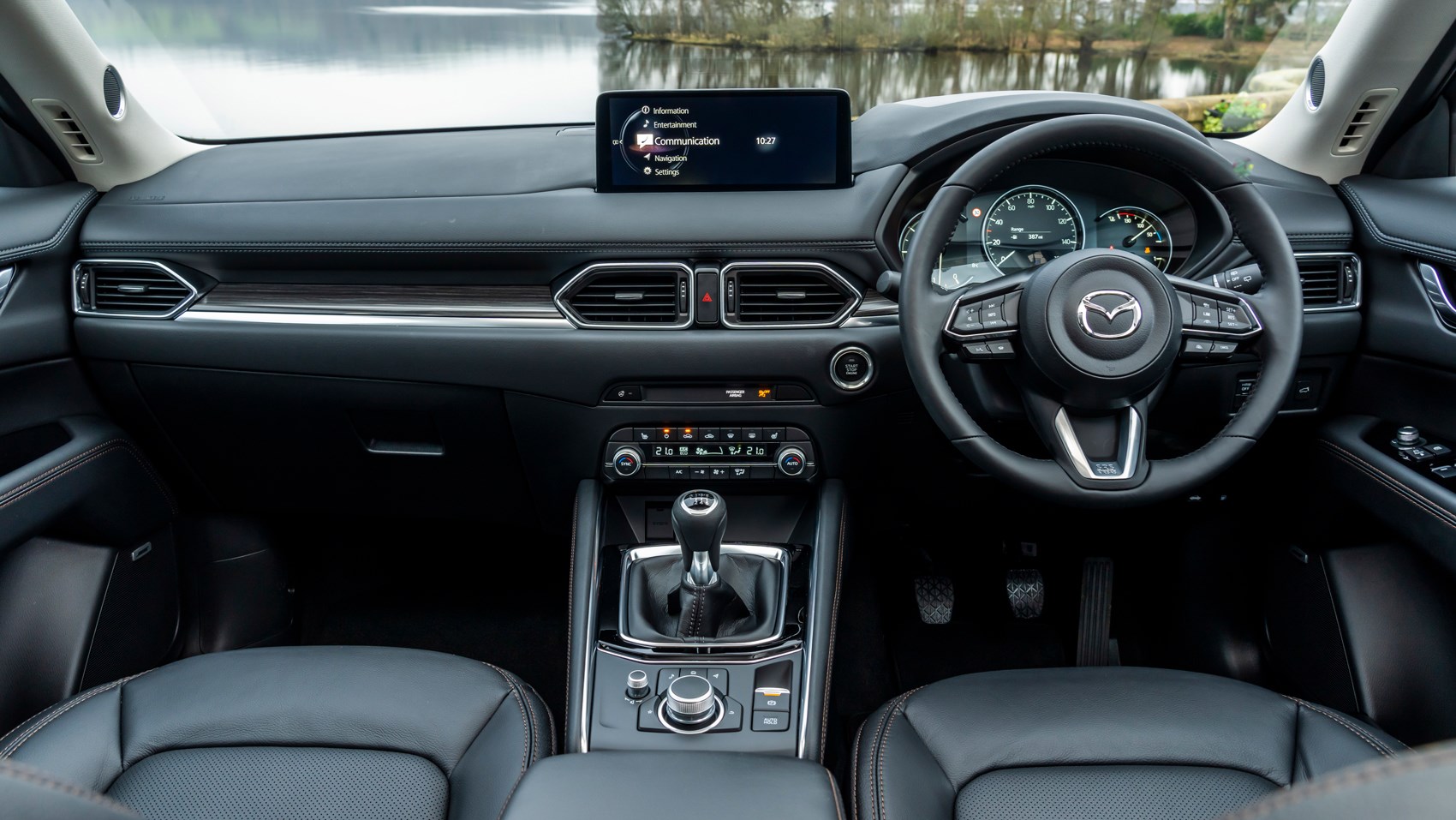► Two petrols and one diesel offered
► Front- and four-wheel drive
► Interior and handling are best points
The growth and sales performance on the Mazda CX-5 is a neat microcosm of the fortunes of the SUV market segment as whole over the past decade or so. When the original was launched in 2013, it accounted for just two per cent of the company’s overall production volume – nowadays, that’s more like 25 per cent. So, it’s important to Mazda’s fortunes, and the current version – launched in 2017 and now facelifted – is up against newer, fresher opposition.
So, for 2022, the CX-5 has received some updates to keep it in the game. It gets a lightly revised front end, with new LED headlamps, a stiffer bodyshell to improve overall levels of NVH, a drive mode selector called Mi-Drive, and a revised selection of model trims – SE, Newground, Sport – to cover the trio of engines available.

What’s it like to drive?
We tried all three models, including an extended run in the range-topping 190bhp 2.5-litre Sport. Starting with the entry-level 163bhp 2.0-litre Skyactiv-G unit, it’s easy to come to the conclusion that it doesn’t really live up to the sporty brief the company has set-up for the CX-5.
It’s quiet and refined for pottering, but we suspect that most drivers will find its lack of mid-range punch mildly annoying especially if they’re used to driving any of the CX-5’s turbocharged opposition. It’s a lovely unit in the Mazda 6, but it just doesn’t feel muscular enough for a higher-riding SUV like this. The good news is that it’s quiet at speed and delivers excellent fuel consumption for a relatively large four-pot.
The 2.5-litre Sport should be better with 190bhp, but it also seems to struggle in the mid-range, and sound quite reedy and unrefined at speed when you do want some acceleration out of it. We’d be prepared to live with a lack of mid-range if there were some top-end bite to counter that, but it never really feels like it’s getting into its stride. The automatic transmission can also be slow to react unless you’re in Sport mode, while fuel consumption on an extended motorway and A-road run hovered around the 27mpg mark.

We had the lowest expectations for the 148bhp diesel version, and yet it proved to be a bit of a hidden gem. It pulls readily from the lowest of revs and in most conditions, feels quicker and more usable than either of the petrols. In addition, it’s refined, economical, and clearly demonstrates that there’s still much life for oil burners, especially when running on CO2-neutral biofuels.
So, if you’re going to buy one and live in the real world and aren’t worried about potential restrictions, choose the diesel. It’s punchy, refined and economical. The next choice is the entry-level 163bhp petrol model, preferably in manual transmission form. Avoid the range-topping 2.5-litre Sport for all the reasons above – it’s thirsty and not particularly quick.
Handling and ride
The CX-5 was always pitched at the sportier end of the SUV spectrum and that holds true today. Although it doesn’t steer quite as sharply as a SEAT Ateca, it’s a modicum of fun in the right situation and handles challenging B-roads pretty well. Its steering as well weighted and the manual gearbox is an absolute delight. Controls are all damped beautifully, and whoever dialled this car in clearly wants the CX-5 to appeal to keen drivers.
Sport mode adds a responsiveness into the mix, hanging on to gears longer (if you’re in an auto) and sharpening up responsiveness. The four-wheel drive system in the range-topping 2.5-litre model doesn’t add much in the way of feel into the equation, but clearly raises security in poor conditions. It’s not perfect, though – the is some roll to contend with as you might expect and turn-in could be crisper – but considering we’re talking about a family SUV here, it’s a fine effort all round.
The compromise between handling and ride is also well judged. The ride is smooth, damping effective and the redesigned seats offer more support than before, proving comfortable on longer journeys. It’s good on the motorway, feeling planted and secure, although we’d like a little less wind and road noise.
What’s it like inside?
The interior of the CX-5 is impressive, and always has been. The cabin is comfortable and very well screwed together, and the materials used are a cut above all its rivals. The touch points have an agreeably premium feel and measure up better than some of its more grandiosely badged rivals. Yes, it has wood trim in GT form, but it looks modern and just adds to the ambience.

Positive points are its overall design and usability. Some might say that it feels conservative compared with newer rivals, thanks to its separate bank of heating controls and rotary dial to drive the infotainment screen. But they just work – touchscreens are still quite a distraction we all need to talk about – making adjustments on the move easy and safe.
It’s also agreeably roomy for families. There’s ample space in the front and rear, and the boot is also large and comes with a secondary storage area under the boot floor. We also like the mix of analogue and digital for the instrument cluster, which looks classier than its rivals’ all-digital offerings.
View Mazda CX-5 lease deals
Mazda CX-5: verdict
The good-value Mazda CX-5 still has plenty going for it, despite being off the pace in terms of powertrain options. The lack of any hybridisation in the CX-5 range is clearly an issue in a market that’s rapidly moving in that direction, and although we’re about to see the company’s shift towards electrification accelerate, the poor old CX-5 appears to be left on the hard shoulder.
But in the here and now, it’s still a decent car. The interior quality and materials used are excellent, and there’s little wrong with the car’s dynamics. The steering is fluid and precise in its feel, and the manual transmissions are excellent. It’s also decent value considering the level of standard equipment you get.
We always liked the way it looks and drives, so the mid-life facelift has played to its strengths by sharpening up its dynamics and leaving the visuals largely untouched, with a few minor nips and tucks staving off the signs of middle-age frumpiness. In truth, it’s a solid mid-fielder, with the choice picks still being the Skoda Karoq and Hyundai Tuscon.
Specs below for diesel version